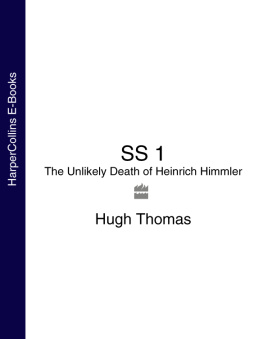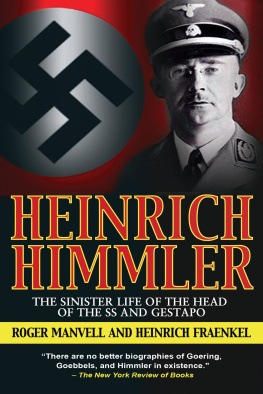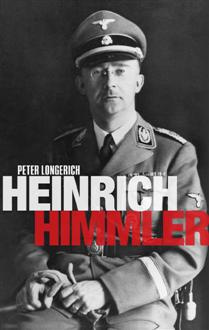The sleep of reason brings forth monsters.
He marveled at how the past could be refigured to suit the present, at how fragile reality truly was when you started to twist it.
Source: George Leaman. Holdings of the Berlin Document Center: A Guide to the Collections. Berlin: BDC, 1994, pp. 276277.
IN THE FALL OF 1938, in the small industrial town of Offenbach am Main just outside Frankfurt, the renowned firm of Gebrder Klingspor received an important commission from one of the most prominent men of the Third Reich. The owner of the business, Karl Klingspor, was an influential typographer and aesthete, a master of ink and paper who transformed the creative fantasies of others into some of the most beautiful books of his age. To seduce the eye, Klingspor retained artists and painters to design sleek new typefaces so words would scroll stylishly across the page. To woo the sense of touch, he selected handmade papers of unusual size and heftrich and thick and textured. For Klingspor and his colleagues, making a book was rather like making love, and bibliophiles from Berlin to Boston sighed with pleasure as they thumbed through his exquisite productions.
The commission in question had arrived from Heinrich Himmler, the head of the Gestapo, the Security Service, and the Security Squad or SS, a paramilitary organization that ran Germanys concentration camps, controlled a profitable network of business enterprises, and provided Adolf Hitlers personal bodyguard. The Reichsfhrer-SS was a busy man, but he remained, in his personal life, something of a bookworm. He read avidly, owned a substantial private library, and carried his favorite volumes with him wherever he traveled. He often recommended books to his subordinates and presented copies as gifts to family members and close associates. It was in this frame of mind that he resolved to produce a special gift for Hitler on the occasion of his fiftieth birthday.
For months, prominent Nazis had been drawing up plans for a gala celebration for Hitler, searching feverishly for presents. The leaders of the Confederation of German Industry had quietly purchased manuscript scores of Richard Wagners early operas, as well as fair copies of parts of Der Ring des Nibelungen, the composers masterpiece.
Himmler had no intention of being left out of this slavish display. He planned to present a fine equestrian portrait of Frederick the Great by the German artist Adolf von Menzel, a painting that would fit nicely into Hitlers private study. The most important of these books, he decided, would be a large portfolio produced by the creative staff of Gebrder Klingspor. It would be entitled:
The Research and Educational Society,
The Ahnenerbe:
Evolution,
Essence,
Effect.
The Ahnenerbe was an elite Nazi research institute that Himmler had founded in 1935 with a small group of associates. Its name derived from a rather obscure German word, Ahnenerbe (pronounced AH-nen-AIR-buh), meaning something inherited from the forefathers. Second, it was to convey these findings to the German public by means of magazine articles, books, museum shows, and scientific conferences.
In reality, however, the elite organization was in the business of mythmaking. Its prominent researchers devoted themselves to distorting the truth and churning out carefully tailored evidence to support the racial ideas of Adolf Hitler. Some scholars twisted their findings consciously; others warped them without thought, unaware that their political views drastically shaped their research. But all proved adept at this manipulation, and for this reason, Himmler prized the institute. He made it an integral part of the SS and housed it in a grand villa in one of Berlins wealthiest neighborhoods. He equipped it with laboratories, libraries, museum workshops, and ample funds for foreign research, and personally befriended several of its senior scientists. By 1939, the Ahnenerbe would count 137 German scholars and scientists on its payroll and employ another 82 support workersfilmmakers, photographers, artists, sculptors, librarians, laboratory technicians, accountants, and secretaries.
THE NAZI LEADERSHIP went to enormous lengths to maintain a public facade of rationality, fairness, and middle-class decency. Hitler and the senior members of his government craved admiration and respect from the world, and to obtain it they continually attempted to display their political ideasparticularly on the subject of racein the best possible light. To assist in this difficult work, they actively recruited German scholars and scientists who could command respect both at home and abroad and make Nazi ideas sound plausible and reasonable to others.
Those who studied the ancient past figured prominently in these recruitment efforts, for Adolf Hitler held strong views on prehistory and history. He believed that all humankind in its astonishing richness and complexity, all human societies in the past, from the Sumerians on their ziggurats to the Incas in their mountain citadels, could be parsed into just three groups. These he described as the founders of culture, the bearers of culture, the destroyers of culture. Hitler was convinced, based on his own highly selective reading of history, that only one racial group fell into the first category. These were the Aryans, a fictional race of tall, willowy, flaxen-haired men and women from northern Europe. According to Hitler, only the Aryans had possessed the spark of genius needed to create civilization; invent music, literature, the visual arts, agriculture, and architecture; and advance humanity by putting their shoulders to the heavy wheel of progress. Most modern Germans, Hitler claimed, descended from the ancient Aryans, and as such they had inherited their forefathers brilliance.
This was the most positive side of the human ledger. On the negative side, Hitler placed the Jews. These, he claimed, were the destroyers of culture. He insisted upon categorizing all the worlds Jews together as a single race, although scholars of the day agreed they were a diverse collection of peoples united by their religious faith.
Serious scientists and scholars outside Germany in the 1930s dismissed these ideas as nonsense. Indeed, nearly 30 percent of all Nobel laureates from Germany during this period were Jewish, although Jews accounted for just 1 percent of the German population.








